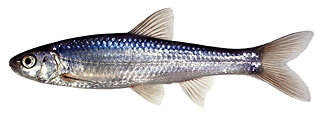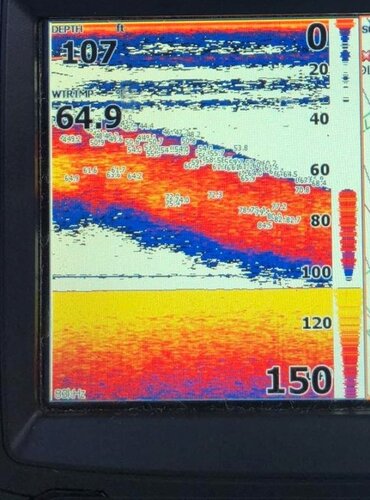-
Posts
239 -
Joined
-
Last visited
Content Type
Profiles
Forums
Events
Gallery
Store
Posts posted by schreckstoff
-
-
Now mount Motor did well on Superior. 36v, 120lb thrust, 84” shaft held our 26’ aluminum cabin work boat rock solid on the spot in sustained 10-15mph winds, bigger gusts, and those crazy big leftover rollers that were always out there.
-
Good question, sorry for the lack of context. Traps are simple fish sampling gear, basically metal or plastic rings rings with mesh socks. they sit on the lake bottom and help us figure out in which habitats Lake whitefish and Cisco spawn.
Trying to figure out what is keeping those populations down, our best current hypothesis is egg incubation habitat.
Got the motor today
and it is Awesome! Burly is a better description. Every part on a trolling motor that I have ever seen break (or broke myself) is reinforced on this thing.
-
I think I can get them fixed Garyw but thanks. Excellent info, Thanks Cap!
-
 1
1
-
-
Anyone have prop repair place they recommend (stainless)? I’m in Oswego but would drive wherever. Left a message for Prop Healer in Oswego but wondering if there are others out there.
-
Thank you for the input all!
We have an 84” Rhodan on its way from Rigged and Ready in NC.
It’s main use will be to hold us in place while setting egg traps this November. -
27’, aluminum cab that kind of sail like.
Would one of those 72-80” , 36v trolling motors with spot lock / gps anchor hold a boat in a 10 knot wind? Hold for maybe a minute?
-
Also interesting that Fulton chain smelt numbers seem up the same year LO smelt are more abundant
-
U have tried everything I would have suggested, Your smelt reasoning makes sense to me.
Have you tried increasing your speed for the LLS?
-
That picture is awesome!
-
Similar sizes at a given age, but sometimes the hatch can be better in one lake than another.
Alewife born this summer are generally anywhere from larvae (1/2 inch) from alewife that spawned in August or as big as 2” for the adults that spawned in late June /early July.
Alewife born last year are 4-5” by now.
A few alewife get to 10” in LO and maybe most of the Fingers. we worked up some legit 12” Alewife from Kueka a few years back. They were amazing, looked like Atlantic Ocean alewife !
-
 1
1
-
-
Suggests the shock from warm to cold changes ion concentrations leading to tremors and loss of equilibrium.
These papers and the news articles talk about upwellings as temperature shocks....but swen it was calm and alewife were dying it made me wonder if cold shock also happen when prey avoid surface predators and disturbance as in the picture (from GreatLaker).
Stanley and Colby - 1971 - Effects of Temperature on Electrolyte Balance and .pdf
-
 1
1
-
-
-
Rolmops, I’ve been thinking similarly to your lots of super vulnerable alewife, emerging from deep dark winter water, all thin and in poor condition being super easy pickings leading to stuffed predators. I started to wonder if this phenomenon has an effect , whether it partially contributes to “transition” time each year.
-
Fished 3 hrs in afternoon out of Long Pt, was laker fishing managed 2, one on glow gambler rig 65’, another on a chute copper , DW blue leopard , we didn’t know was there till we picked up. Best screens south of point
-
A bunch of dead and dying small alewife on the surface out at Sandy Creek today too.
Still looking for that elusive first coho....could also use a net man who can scrap up big LTs and not knock them off the hook. I guess that is why his handle is “Great Laker” and not “Great Netter”. It was a big old cool dinosaur of a fish, hit a spin n glo behind a cowbell, 85’ or so. Good times!
-
 1
1
-
-
Keeping the alewife spawn timing and ages straight can be counterintuitive. Alewife definitely come inshore early, but more to eat (or die) vs to spawn. Spawning is more like late June, July, even early August. Spawn Can be earlier in embayments. An abstract about LO alewife spawning, (here) from a great fisheries scientist and friend . PM me if u want the paper.
Bruce is spot on with calling them age-1 or yearlings. I see some posts talking about these small alewife as YOY , but the YOY or young of year (from this year) won’t be around until July or Aug and will be tiny then . Ultimately they grow to 3 or 4 inches by winter. These 3-4 inch fish are age-1 and as many are seeing can be REALLY abundant in the spring when spawning and survival conditions are right the previous year, but they will draw every predators attention, I loved the post about jack perch chowing them.
Bruce your observation about the few adults is key, and A-L-A’s points about multiple hatches too! It doesn’t take many adults if conditions are right and we seem on the right warming track this year so far. The work we did with Brockport showed even a few age 1 fish ( very few, only big ones ) could spawn....but it’s not thought they help much.What’s most fun to contemplate is what happens with wild kings in a year like this when there are so many similar sized Alewife, does their survival shoot up...which then boosts predatory pressure that crop alewife back down?
I’m all fired up to fish with Great Laker on Friday, still looking for my first coho!
no wasted fish flesh right VP!
I know, this pic both resembles and describes me

-
 2
2
-
-
I saw a few of those yearling sized Alewife at ramp in Little Sodus and heard of others in Port Bay. Likely to see more over next few weeks as inside water warms and the bid schools of them start coming up from deep water.
-
Fished Mid morning till around 1. Was surprised how blank the screens were, saw a few small bait like clusters on bottom and maybe a laker or 2. managed a laker on a Gambler. Probably 10 boats or so. Scouted water from 180 to the inside , fleet was around 120, where we saw a few marks.
-
Congrats and great post, love that second pic of that LT just under water.
“Idk if there's ever been a place or website with such a wealth of great lakes fishing information as we have here and we owe that to generous members “
couldn’t agree more. This site is the gold standard for great people and information sharing, In fact just the other day one of the sites sages reminded me to run my Gambler rigs slllooowwer.
-
 2
2
-
-
Changing the timing of LO stocking seems like one of those relatively easy changes to enact that could/should help
-
Thanks. Heard from locals and charters channel depth is 12’ (thank you AD). Trawling in Sodus and Little Sodus today
-
 1
1
-
-
Were they dredging the channel this spring or working on something else?
thanks
-
Awesome video, thanks for sharing, You cats somehow raise the bar on video quality & entertainment every time. Best parts were the launching drone shots and croaking belly hooked LT!
-
 1
1
-
-
Thanks for the update!




Perch fisherman, duck hunters: Watch out for research buoys (Chaumont & Sodus Bay)
in Open Lake Discussion
Posted
Wanted to make anglers and duck hunters aware of research buoys in the bays (Chaumont, Sodus) and parts of Lake Ontario (southwest of Point Peninsula). Buoys mark egg trap locations that are being used to determine how habitat (depth, bottom type) influences Lake Whitefish and Cisco egg deposition and egg survival. There are remarkably few actual observations for what habitats these species actually spawn on, and even less on whether changes to the lake bottom have contributed to their population declines. Traps will be pulled just before ice up (mid - December).
If possible, please avoid fishing in the area immediately around those buoys, as there are lines and traps on the lake bottom that can be snagged. I've tried my best to pick locations away from known fall hotspots but don't hesitate to PM (or text) me if the buoys are causing you issues. Also feel free to PM or email if you have questions or interest in this research.
Thank you,
Brian Weidel